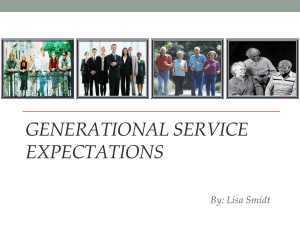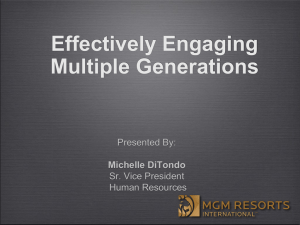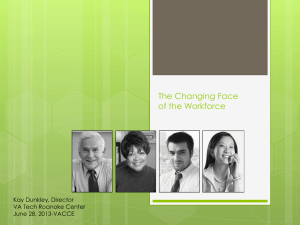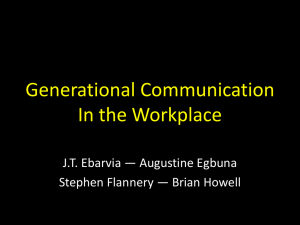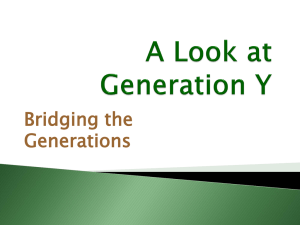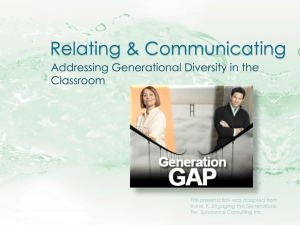The Night of Celebration - Western Kentucky University
advertisement
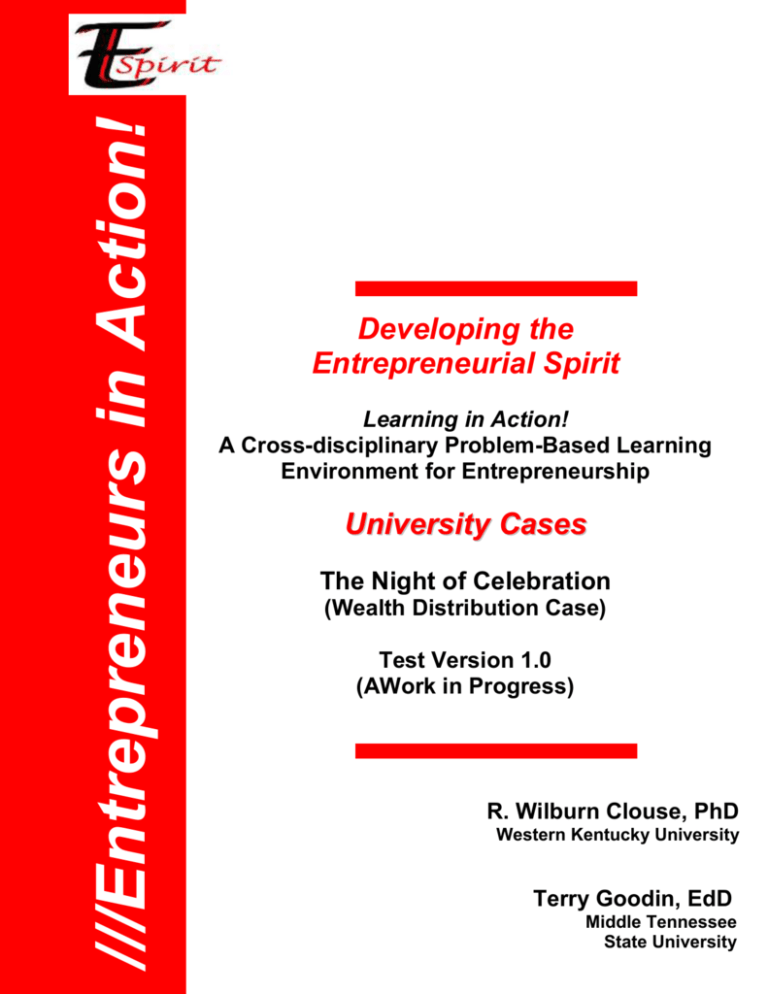
///Entrepreneurs in Action! Developing the Entrepreneurial Spirit Learning in Action! A Cross-disciplinary Problem-Based Learning Environment for Entrepreneurship University Cases The Night of Celebration (Wealth Distribution Case) Test Version 1.0 (AWork in Progress) R. Wilburn Clouse, PhD Western Kentucky University Terry Goodin, EdD Middle Tennessee State University TABLE OF CONTENTS THE NIGHT OF CELEBRATION ............................................................................................ 3 INTRODUCTION................................................................................................................................ 3 LEARNING VIGNETTE -- THE NIGHT OF CELEBRATION: INHERITANCE CASE ........................... 5 GUIDING QUESTIONS ...................................................................................................................... 6 LEARNING OBJECTIVES .................................................................................................................. 6 RESOURCES ..................................................................................................................................... 6 PRINT ARTICLES ............................................................................................................................. 6 BUSINESS SUPPORT MATERIALS .................................................................................................... 7 ONLINE EXPERTS ......................................................................................................................... 10 CREATIVITY AND ENTREPRENEURSHIP EXPERTS .............................................................. 10 ONLINE RESOURCES AND VIDEO CLIPS ...................................................................................... 11 REFERENCES ................................................................................................................. 11 2 The Night of Celebration (Wealth Distribution Case) Introduction Over the past 25 years a select population in the United States has developed a considerable amount of wealth. Although there have been ups and downs in the economy in this time, it has basically been a “growth” economy and inflation has remained relatively stable. Due to this economic prosperity, many Americans have accumulated a substantial amount of wealth. Much of that wealth currently lies in the hands of the “baby boomer” generation, which is defined as that cohort of children born right after World War II, during the time period of 1946-1964. Over the years, the baby boom generation has received a great deal of attention from policy makers, marketers and other researchers, partly because it was one of the highest birth-rate generations ever in the United States. Members of this cohort share many of the same life experiences and world events have shaped their beliefs and value systems. The postwar prosperity provided a relatively secure economic environment that gave boomers ample employment and educational opportunities. Unlike their mothers and fathers of the GI Generation, the baby boomers are often perceived as a generation focused on personal fulfillment and individual capacities. At the same time, many technological and social advances mark this era. Out of this generational cohort we saw the development and implementation of color television, the interstate highway system, nuclear power (both constructive and destructive forms), mass airline transportation systems, space travel and social changes like the civil and women’s rights movements. During this time period we also witnessed the growth and development of major cities that have become financial and transportation hubs throughout the country, with population centers like Atlanta, Dallas, Los Angeles, and Orlando growing into major metropolitan areas. Many others small towns have followed suit. From the technological inventions, social advances and population growth, we have seen the development of capital among a large number of the baby boomers. The first of the boomers are now approaching the age of 60. Some have elected to take early retirement. Others are considering 62 as the “magic” retirement age, and some plan to continue their active work life, if in less stressful organizational settings. Many of these people have prepared themselves for this time through company retirement accounts, 401(K) plans and the social security system. It is also expected that billions of dollars in property, real estate holdings, business interests and personal fortunes will, by necessity, be redistributed to future generations. This transfer of wealth represents a great opportunity to investigate new, innovative methods of passing assets down to succeeding generations, termed “Gen Xers” and the “Y Generation.” Over the years, researchers have been able to develop characteristics for each generation. Table One, entitled “Generational Characteristics,” provides information related to birth years and generational characteristics. Table One provides us with the data to put the baby boom generation into perspective and to help us realize the potential impact that the boomers have had on our economy and the influence that they will continue wield in the coming decades. TABLE 1: Generational Definitions Strauss and Howe (1991) 1905 Rice (1995) Mitchell (1998) World War II generation GI generation 1909 Pontell (2003) Matures GI generation 1922 Depression gen. GIs Swing generation Silent generation 1930 Depression generation Silents 1940 War babies 1942 1946 GI generation Silent generation 1928 1943 Wellner (2000) Matures 1912 1925 Smith and Clurman (1997) Baby boomers Boom generation Woodstock gen. Baby boomers Baby boomers Baby boomers 1951 1954 Generation Jones 1955 Zoomers 1956 1960 1961 Trailing boomers Thirteenth generation 1965 Generation X 1966 Baby busters 1977 Generation X Generation X Millennial generation 1979 1982 Generation X Generation Y Generation Y Millennial generation 1983 In order to better understand the impact of the boomer generation on our society, we will provide a brief description of the previous generations. Researchers have identified the time period starting in 1901 and ending in 1932 as the time of the “GI generation.” These people lived through the Great Depression, World War I and World War II. They were greatly influenced by these world events. As a result of these events, many in this generation had to make great sacrifices in their personal lives. The “Silent Generation,” which followed next, is identified as encompassing the years 1933-1945. The birth rate during this time period remained as a very low level, in part as a result of the Great Depression years. The interests of this generation included watching movies, reading and enjoying music from previous time periods. Many of these people found it necessary to care for their aging parents and sometimes their grandchildren. Some have also referred to this generation as the “Sandwich Generation.” Because of their financial circumstances, this generation frequently spent their disposable income, not on themselves, but on others for whom they were responsible. As previously stated, the Baby Boom Generation includes people born from 1946 to 1964. This cohort experienced the economic development that followed World War II. The postwar prosperity made it possible for this generation to enjoy many of the pleasures of the “good life,” as opposed to the Silent Generation and the GI Generation. Because of the large number of babies born during this time, this group has had a tremendous impact on the economy of the entire world. Born between 1965 and 1976 is a group referred to as “Generation X.” Unlike the baby boomers, Gen-Xers are seen by many as being cautious and pessimistic. This group has experienced tumultuous political uprisings, downsizing of companies, and the rise of uncertainty and chaos in the world at large. During the baby boom era companies were able to develop consumer confidence and brand loyalty. This loyalty seemed to vanish during the Generation X time period. Between 1977-1987, there developed the Generation Y cohort. Known sometimes as the “Millennia Generation,” this group is the first to grow up with high technology as a part of their personal lives. Preceding generations all struggled with the implementation of new technologies. Generation Y never new that struggle, as microcomputers, Internet and cell phones were to this generation as were electricity and automobiles were to previous generations. The newest generation is called “Generation Z.” This cohort is composed of children born from 1988 to the present and oldest of this group is now only in their teen years. Only the future will tell how this young generation will impact the economies of the United States and the world. Learning Vignette -- The Night of Celebration: Inheritance Case Jim, a lad of twenty-one years and a graduate of XYZ University, was finding it hard to get a job after the events of 9/11. One week after graduation Jim went to his mailbox one afternoon. Expecting to find a pile of bills and solicitations, Jim was surprised to find an envelope from a law firm. Upon opening the letter, Jim discovered that his rich aunt, Judy, had left him a large sum of money. Jim immediately went inside and called the law firm to learn that, after inheritance tax, the sum came to five hundred thousand dollars. He also learned that his Aunt Judy had left one condition on the inheritance. The money had to be used to open a new business venture. Jim was overjoyed at the good news about the inheritance, but knew nothing about starting a business. He had studied Leadership Theory at the university and was prepared to work for some company such as Enron or WorldCom. While at XYZ University, Jim had also learned some about the country music industry and had spent several hours in the local sports bars. Unfortunately, Jim had no clue about how to generate innovative new ideas or how to think entrepreneurially. Jim decided that he needed some help. He was known to enjoy a beverage or two with his friends at the local sports bar, so he invited his friends for a night of celebration. Friends at the meeting were Mark, a real sports fan, Mary, who had given some thought to opening her own business, Gary, who was the local playboy and Sara, who had studied math and physics at the university. Jim presented this group with his good fortune and asked for their help in developing ideas for his new business venture. Guiding Questions 1. What impact will previous generation cohorts likely play in the solution to this case? 2. What is the role of student relationships in the solution of this problem? How may current student relationships be influenced by their relationships with their parents and grandparents? 3. What projections can you make concerning the products and services that will be needed by Generation Y? 4. What ideas do you think were discussed at the night of celebration? (List) 5. What information would Jim need to know to start a business venture around each idea? (Outline the needed information) 6. What web sites would be helpful for Jim? (List) Learning Objectives 1. To learn about the various generation cohorts. 2. To better help students to understand the lives and conditions of their parents and grandparents. 3. To understand the role of sacrifice in wealth development. 4. To appreciate the sacrifice and suffering of other generations. 5. To understand the thought process involved in creating a new enterprise. 6. To understand the need to respect laws related to wealth distribution. 7. To learn and appreciate how past generations want to continue to support the entrepreneurship spirit. Resources The following resource articles will provide background information on the baby boom generation and will give other facts concerning generational characteristics. Print Articles Hill, R. P. (2002, March). Managing across generations in the 21st century: Important lessons from the ivory trenches. Journal of Management Inquiry, 11(1), 60-66. Kim, Y., Kim, E. & Kang, J. (2003, December). Teens’ mall shopping motivations: Functions of loneliness and media usage. Family and Consumer Sciences Research Journal, 32(2), 140-167. Klein, S. A. & Bostrom, A. C. (2002, February). Elders, values, and peppermint candies. Home Health Care Management & Practice, 14(2), 137-139. Norum, P. S. (2003, September). Examination of generational differences in household apparel expenditures. Family and Consumer Sciences Research Journal, 32(1), 52-75. Piktialis, D. & Morgan, H. (2003, January/February). The aging of the U.S. workforce and its implications for employers. Compensation & Benefits Review. Reardon, R. C. , Vernick, S. H. & Reed, C. A. (2004, May). The distribution of the U.S. workforce from 1960 to 1990: A RIASEC perspective. Journal of Career Assessment, 12(2), 99–112. Smith, R. & Yang, X. (2004). Toward a general theory of creativity in advertising: Examining the role of divergence. Marketing Theory, 4(1/2), 31-58. Stevenson, E. & Vaino, S. (2003, November/December). Security in retirement: New annuity plan options. Compensation & Benefits Review. Business Support Materials These sources are non-technical and will provide the student with information about how to build a business plan around their ideas for case solutions. Allbusiness.com – http://allbusiness.com/ One of the most comprehensive sites on the Web for small and growing businesses, this site offers over 2000 articles, “how-to’s,” forms, agreements, questions-and-answers, solutions, and services useful to those starting a new business venture. Bloomberg.com – http://www.bloomberg.com One of the leading sites for breaking financial news, investor tools and data, Bloomberg.com gives access to business information, including the latest data and analytical tools. Bplans.com – http://www.bplans.com Bplans.com offers a large collection of free sample business plans online and helpful tools and know-how for managing a business. The site includes practical advice on planning, interactive tools, and a panel of experts available to answer specific questions. The Business Forum Online – http://www.businessforum.com This service springs from a weekly newspaper column addressing issues and questions of specific interest to entrepreneurs and emerging businesses. Each column focuses on the immediate consequences of the issue to the owner/manager of the emerging business. MoreBusiness.com – http://www.morebusiness.com MoreBusiness.com, a comprehensive resource for small businesses, contains tips, articles, ideas, templates, worksheets, sample business plans, tools, financial benchmarks, sample contracts, and websites. These business sites may offer some ideas and provide some review articles. Some sites may require a fee. Or you may wish to use the Library for paper copies of current and past articles. Wall Street Journal- http://www.wsj.com/ The leading daily business newspaper. Fortune- http://www.fortune.com/ A leading business journal. Harvard Business Review- www.harvardbusinessreview.com/ A leading cutting-edge business journal. Businessweek.com - http://businessweek.com/ The website of the weekly business magazine, this site offers news and related information for the entrepreneur. An archive of articles is also provided. Some services may require subscription. www.uspto.gov - Patent and Trademark Office Excellent source for technical information. www.sba.gov/ADVO/stats- SBA Office of Advocacy--Economic Statistics and Research http://www.sba.gov/ -SBA Small Business Administration--SBA Support in starting, financing and managing a business www.bizoffice.com -Small and Home Based Business Links Provides support services for home-based companies. www.sbaer.uca.edu- Small Business Advancement National Center--Resources include newsletters, archives, SBA and other Government sites and related affiliates. www.bizplan.com- Strategic Business Planning Co.--The mission of the Strategic Business Planning Co. is to help organizations define their mission and achieve their objectives by developing business and strategic plans and by periodically conducting a comprehensive review of the environment in which they operate. www.business.gov- U.S. Business Advisor--U.S. Business Advisor – a one-stop electronic link to the information and services government provides for the business community—Laws and regulations, forms and support services. www.sbaer.uca.edu- Small Business Advancement National Center--Resources include newsletters, archives, SBA and other Government sites and related affiliates. www.bizplan.com- Strategic Business Planning Co.--The mission of the Strategic Business Planning Co. is to help organizations define their mission and achieve their objectives by developing business and strategic plans and by periodically conducting a comprehensive review of the environment in which they operate. www.business.gov- U.S. Business Advisor--U.S. Business Advisor – a one-stop electronic link to the information and services government provides for the business community—Laws and regulations, forms and support services. www.census.gov- U.S. Census Bureau--Resources include population census, economic data, Business surveys, and other related Bureau statistics. http://www.dowjones.com- Dow Jones – Latest financial information about stock market performance. www.benlore.com- The Entrepreneur's Mind The Entrepreneur's Mind is a Web-based resource that presents an array of real-life stories and advice from successful entrepreneurs and industry experts on the many different facets of entrepreneurship and emerging business. www.entrepreneurmag.com- Entrepreneur Magazine--Provides solutions for growing businesses www.engeniussolutions.com- Engineering projects Provides information about new products and ideas (some student developed). www.engeniussolutions.com- Engineering projects Provides information about new products and ideas (some student developed). Online Experts These online experts have agreed to be available for providing information, ideas and other support while the case is in progress. Students should e-mail questions to the appropriate person. They will respond, usually within one working day. Creativity and Entrepreneurship Experts Dr. R. Wilburn Clouse Associate Professor—Creativity and Entrepreneurship Vanderbilt University wil.clouse@vanderbilt.edu Dr. Terry Goodin Research Associate-- Creativity and Entrepreneurship Vanderbilt University terry.l.goodin@vanderbilt.edu Dr. Joe Aniello-- Creativity and Entrepreneurship Assistant Professor Francis Marion University janiello@fmarion.edu Online Resources and Video Clips (Under development) Available at: http://entrepreneurship.vanderbilt.edu References Hill, R. P. (2002, March). Managing across generations in the 21st century: Important lessons from the ivory trenches. Journal of Management Inquiry, 11(1), 60-66. Kim, Y., Kim, E. & Kang, J. (2003, December). Teens’ mall shopping motivations: Functions of loneliness and media usage. Family and Consumer Sciences Research Journal, 32(2), 140-167. Klein, S. A. & Bostrom, A. C. (2002, February). Elders, values, and peppermint candies. Home Health Care Management & Practice, 14(2), 137-139. Norum, P. S. (2003, September). Examination of generational differences in household apparel expenditures. Family and Consumer Sciences Research Journal, 32(1), 52-75. Piktialis, D. & Morgan, H. (2003, January/February). The aging of the U.S. workforce and its implications for employers. Compensation & Benefits Review. Reardon, R. C. , Vernick, S. H. & Reed, C. A. (2004, May). The distribution of the U.S. workforce from 1960 to 1990: A RIASEC perspective. Journal of Career Assessment, 12(2), 99–112. Smith, R. & Yang, X. (2004). Toward a general theory of creativity in advertising: Examining the role of divergence. Marketing Theory, 4(1/2), 31-58. Stevenson, E. & Vaino, S. (2003, November/December). Security in retirement: New annuity plan options. Compensation & Benefits Review. This work is part of the Forum for Entrepreneurship Education at Vanderbilt University and was support in part by The Coleman Foundation Inc.-- Grant number 4446-- Entrepreneurs in Action!, and The National Science Foundation under Grant No. 0091632 and other related funds. (Any opinions, findings, and conclusions or recommendations expressed in this presentation are those of the author(s) and do not necessarily reflect the views of the National Science Foundation). wil.clouse@vanderbilt.edu
